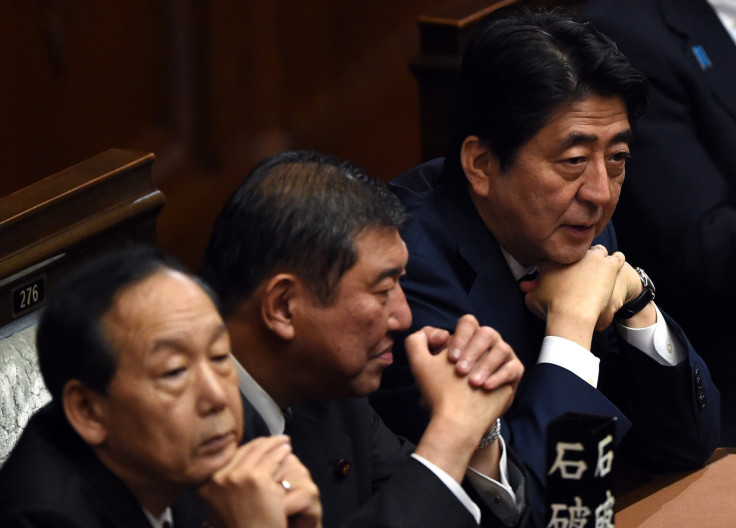Japanese PM Shinzo Abe Unveils New Cabinet, Retains Half Of His Ministers

The new lineup in Japanese Prime Minister Shinzo Abe’s cabinet was unveiled Wednesday, with key ministerial posts remaining unchanged. Abe retained nine of his 19-member cabinet, playing it safe as he attempts to focus on the economy after enacting an unpopular security legislation, Japan Today reported. The public had protested his new legislation that allowed Japanese troops to fight on foreign soil for the first time in 70 years.
Nine ministers, including Chief Cabinet Secretary Yoshihide Suga, Finance Minister Taro Aso and Economics Minister Akira Amari kept their portfolios. Abe also reportedly decided to retain Defense Minister Gen Nakatani and Foreign Minister Fumio Kishida.
There are many new faces as well. Taro Kono, a government critic from Abe's Liberal Democratic Party (LDP), was appointed minister for administrative reform, Reuters reported. Motoo Hayashi will take over as the new trade and investment minister.
The popular entrants were former wrestler Hiroshi Hase, who was appointed as education minister, and television presenter Tamayo Marukawa, who was named the new environment minister.
The number of women in the cabinet, however, dropped to three from five, according to Bangkok Post. This is a significant departure from the reshuffle of the cabinet last September when Abe attempted to increase his ratings by including five women in his cabinet. The move, however, backfired soon after when two of them subsequently resigned over scandals.
Abe will also reportedly promote Katsunobu Kato, a deputy chief cabinet secretary, to a new post to spearhead his latest goal to build a "Society in Which All 100 Million People Can be Active." Kato has also been given the responsibility to boost Japan’s demographics, which involves creating policies with an aim to increase the birthrate and accelerate spending on elderly and child care, Bloomberg reported.
The Japanese premier has been trying to fix the country's economy, with a renewed target to expand the economy by one-fifth to 600 trillion yen ($5 trillion). Japan is said to be in technical recession and core consumer prices in August witnessed their first annual drop since the central bank deployed its massive stimulus program over two years ago. Earlier on Wednesday, the Bank of Japan held off on expanding its stimulus package, despite growing signs of recession.
© Copyright IBTimes 2024. All rights reserved.











